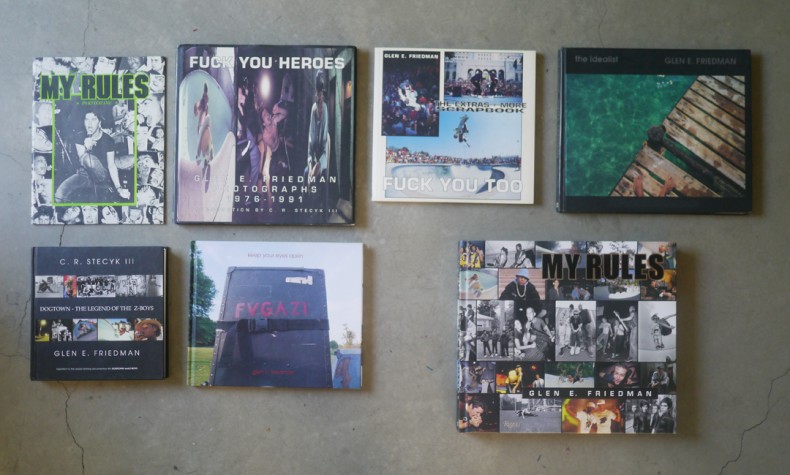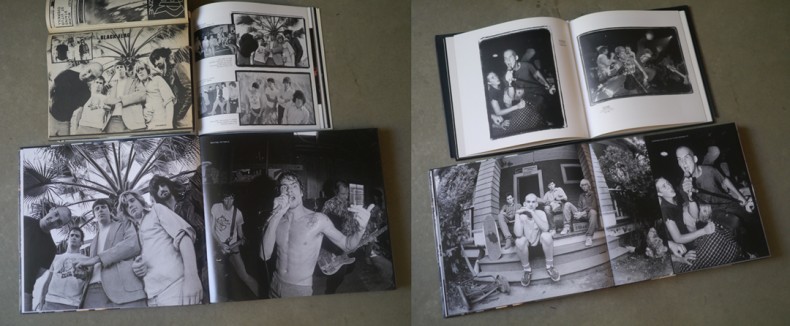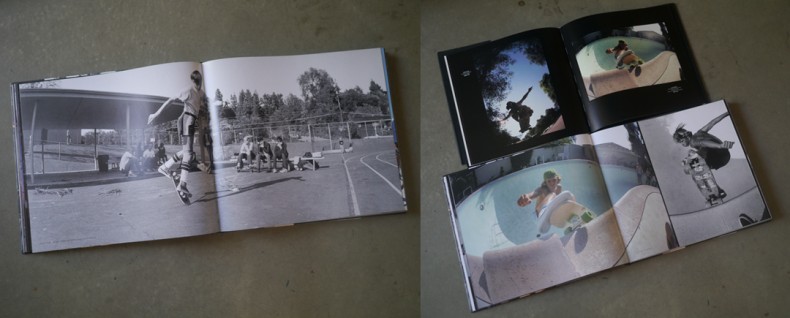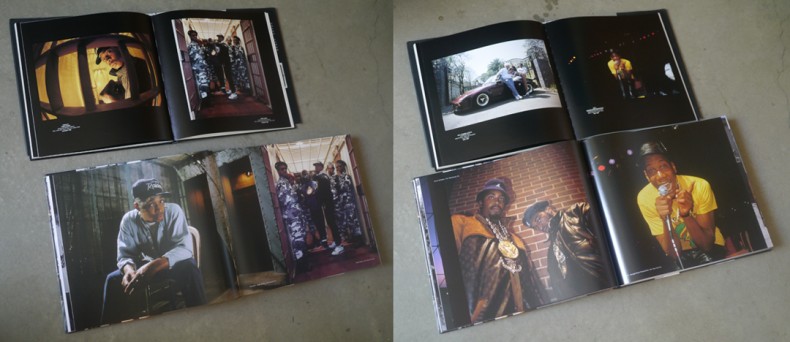Sep 30, 2014 Glen E. Friedman’s My Rules
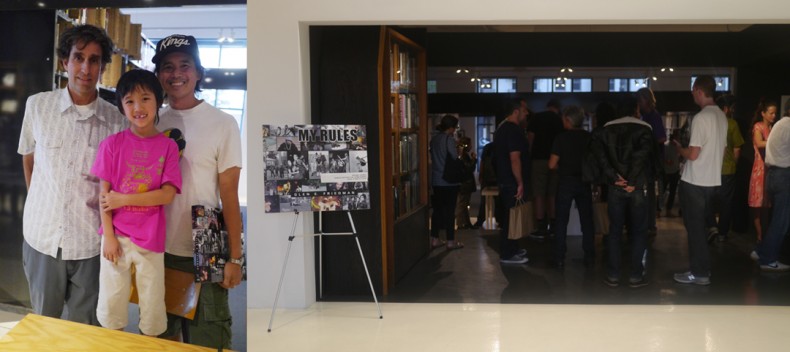
Last week, I went to Arcana Books in Culver City to attend a book signing by photographer Glen E. Friedman for his latest collection, My Rules. I’m a big fan of Friedman’s work. He would be a badass if he were able to simply capture the energy, aesthetics, and personalities of the early Dogtown scene, the golden age of hip hop, or the emergence of hardcore punk in L.A. or New York City. Of course, he was there for all of them–not only documenting the cultures but pushing them.
And on top of that, he has what Washington D.C. hardcore band (and frequent subject) Bad Brains calls the PMA (positive mental attitude) and shoots what he wants on his terms, never compromising for popularity or money’s sake. I recall the first time I went to one of his book signings, he wrote, “Keep the PMA.” And then when I began corresponding with him to purchase photos to run in a series of interviews with Dogtown skaters for the magazine I helped make, Giant Robot, he responded straightforwardly by asking exactly what I needed and adding that he had “no time to fuck around.”
So it makes perfect sense that his new collection is titled My Rules, just like the DIY punk rock photozine he published at the age of 20 in 1982. In many ways, it is a return to form after his more recent, more focused collections, Dogtown – The Legend of Z-Boys (2002) and Keep Your Eyes Open: Fugazi (2007). Like Fuck You Heroes, it mixes up the scenes, and like Fuck You Too, and The Idealist, it mixes the eras, as well, leading one to see past formal and obvious differences of action, style, and time and feel the commonalities of raw energy, creativity, and rebellion. It doesn’t hurt that Friedman is friends with his subjects, who might be more accurately considered conspirators in changing the mainstream. Every time I attend one of his signings I see legends from the photos right there, gladly signing books as well.
This gigantic collection contains pretty much everything from GEF’s previous books but bigger and better with even more images and extra guest essays. All that would mean nothing if Friedman didn’t have a gifted eye or ability to shoot excellent shots in difficult circumstances. Familiarity is framed by composition and clarity, barely reining in the bands, rappers, and skaters who are ready to explode off of each page. And when there’s a formal shot, the subjects never look like trained monkeys trying to be cool. They simply are cool, like Suicidal Tendencies or Ice T on the album covers that he shot.
Friedman’s portraits and photos of Black Flag (above left) and Minor Threat (above right) are justifiably iconic and loved by fans of underground music. Compare the well-known, claustrophobic portrait of Black Flag under a palm tree from the first My Rules zine to more of a scrapbook treatment in Fuck You Too to the more color balanced, crisp, and realized image in the newest book. I love that bassist Chuck Dukowski wrote a new essay to go with it. Ian Mackaye from Minor Threat (above right) and Fugazi also contributed a lengthy new essay to go along with images that have been enlarged and improved for extra detail and appreciation.
There are so many cool new editorials that have been added to the mix: Tony (Cadena) Brandenburg from The Adolescents, Jello Biafra from the Dead Kennedys, Dr. Know from Bad Brains. Friedman doesn’t try to fit anyone’s voice into a style or format. They write about different stuff in their pieces voices but have the common attribute of being able to place their experiences and accomplishments in a far context greater than their subcultures.
Of course there’s the Big Boys and Beastie Boys whose music is affected by skateboarding, but Friedman as a rule doesn’t combine cultures in the photos. The scenes are radical enough on their own without a need for mashing them up to add freshness. The one case of overlapping that comes to mind is an unforced one: Rodney Mullen doing some ahead-of-his-time technical ripping as Minor Threat watches from a school bench (above left). Amazing but the average eye would not even know.
The skating looks extra powerful on the larger pages of the new book and a side-by-side comparison reveals serious color balancing. Check out the image of legendary Z-Boy Jay Adams ripping so hard that he knocks a pool cement block loose with his back truck (above right). The tail is practically swishing past your nose. Alva, Kubo, Olsen, Miller, Peters–they’re all in the new book (which is so much bigger than the Dogtown volume) and their style and power are timeless. Meanwhile, essays by The Mutt, T.A., Jeff Ho, and others reflect different places, styles, and schools but reveal a unified hunger to evolve.
Friedman’s hip hop photography is probably the most familiar to the general public. His classic images of Public Enemy (above left), Run DMC, LL Cool J, the Beastie Boys, Boogie Down Production (above right), Ice Cube, and Ice T can be seen on album art, promotional material, and videos. The essays from heavy hitters and thinkers Chuck D, Darryl McDaniels, Rakim, and Ice T lend credence to Friedman’s early awareness that the then-emerging culture of hip hop would be “the next punk,” sounding like noise to outsiders but going on to change not only the art of music but grow a brand-new aesthetic.
I wasn’t able to stick around for the outspoken and independent vegan photographer’s question-and-answer session, so I can only supply my own takes on the new book and how it relates to his previous volumes. But anything that I say really just pales in comparison to the sheer brilliance and importance of the individuals and scenes on his pages, anyway. From Darby Crash, Christian Hosoi, and Slayer to Noam Chomsky, Cornel West, and Pussy Riot, no one else brings iconoclasts and upstarts together like Glen E. Friedman. Buy the massive book for 55 bucks at an independent bookstore, be inspired, and get stoked.
Get more information about GEF at burningflags.com. And follow Imprint Culture Lab via Twitter, Instagram, and Facebook for more articles, events, and announcements…



